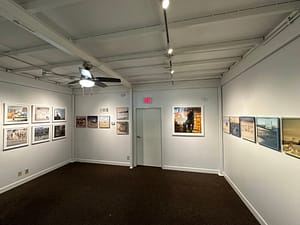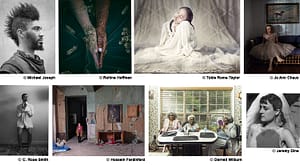Kelli Couch was born and raised in LaGrange, Georgia. She is the oldest of four sisters and one brother. She has two step-sisters and five step-brothers. She is married and the mother of two. Couch graduated from the University of West Georgia with a BFA in Photography and is set to begin her second year of grad school at Georgia State University. She was chosen by a select jury as one of the four winners of APG’s inaugural Student Prize exhibition. Her work is warm, kind, and full of family, with a welcome spoonful of the darkly comic.
When did you become interested in photography?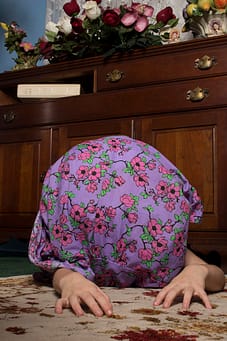
In all honesty, I avoided taking photography while I was an undergraduate. I changed my major multiple times, from Illustration to Painting to Art Education. Photography was a required elective, and I opted to take it online. I soon discovered that I loved the medium, so I decided to take another photo class. From then on I knew that I had found a medium that served my artistic purposes.
Are you always working or do you set aside a specific time to work?
Resting and taking time for my family and myself, are important parts of my artistic process. I tend to work intensely for months at a time and then spend a few weeks in-between productivity to relax and enjoy leisurely activities. Nevertheless, I am always reading, writing and being inspired.
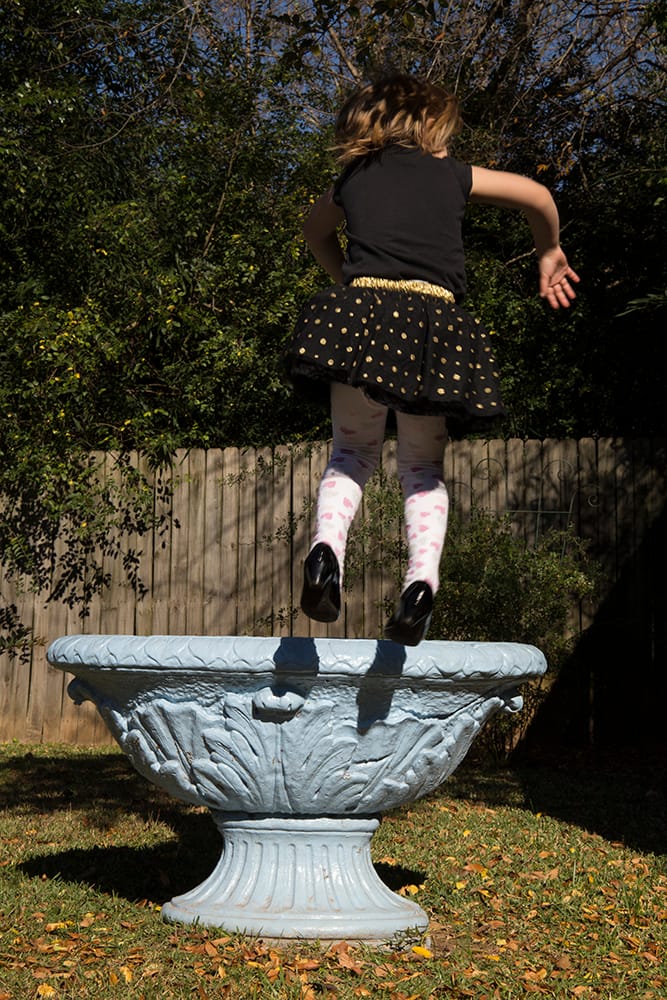
How much of a role does your family play in your work?
Family, both nuclear and extended, as well as friends, play a pivotal role in my practice. My work is autobiographical, and I am constantly inspired by the people I surround myself with and how they have shaped who I am. I enjoy exploring the macrocosms of society through the microcosms of my daily life.
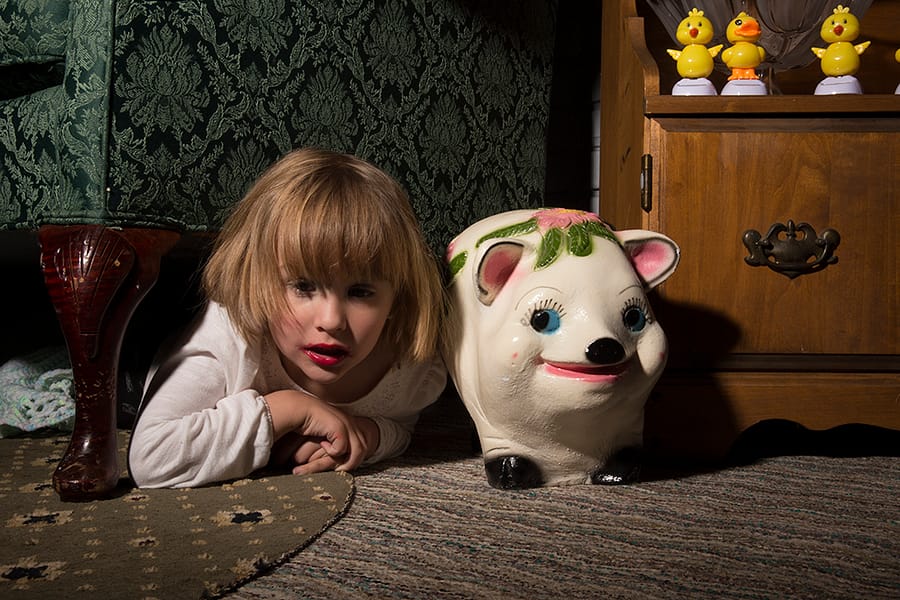
There is a warmth and innocence in your work, but also a darker, more sinister thing lurking just below the surface. Are there lessons to be learned here?
One of my biggest influences is the children’s book writer, Roald Dahl. I appreciate how he complicates childhood and innocence with darkness and fanaticism. Children are more aware of the sinister aspects of life than we give them credit for. Also, I believe they are better equipped to handle life’s woes. My work is about embracing the self as well as society’s implications. There will always be an internal battle for the realization of one’s self.
How has your work changed over your time in school?
My work has become directly autobiographical. I used to feature myself more in my work but I have become more open to others functioning as a symbolism for my own beliefs while simultaneously representing themselves. I no longer feel the need to have a human figure present in every image. The narratives have become loose and more open to interpretation.
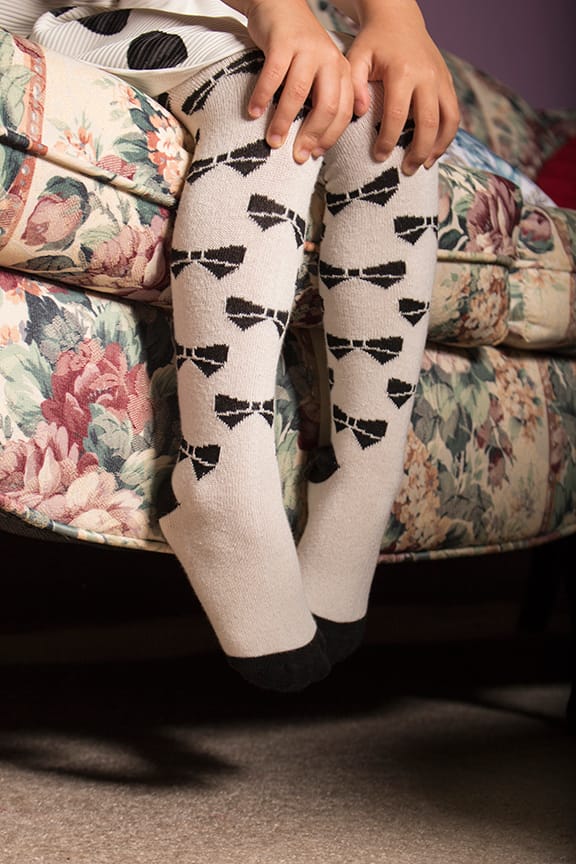
Is there an image in this series that you are most proud of?
I am most proud of the image “Sever” because that particular photograph was the starting point for my series. At the time, I was full of self-doubt and I wasn’t entirely convinced with my abilities. While photographing my daughter, her toes disappeared completely by accident. The image was culmination of the anxiety I felt psychologically. This incident beckoned me to become more susceptible to chance and set the precedent for how future images were produced.
Can you tell me a little bit about your editing process?
My professors say, “Editing is like destroying your babies.” It’s extremely hard. For the series, I wanted to create a loose narrative that was like an autobiographical odyssey. So, I looked at my images, repeated themes, and color to sequence the journey that I wanted the viewer to make. Most of my editing is done by intuition and feeling.
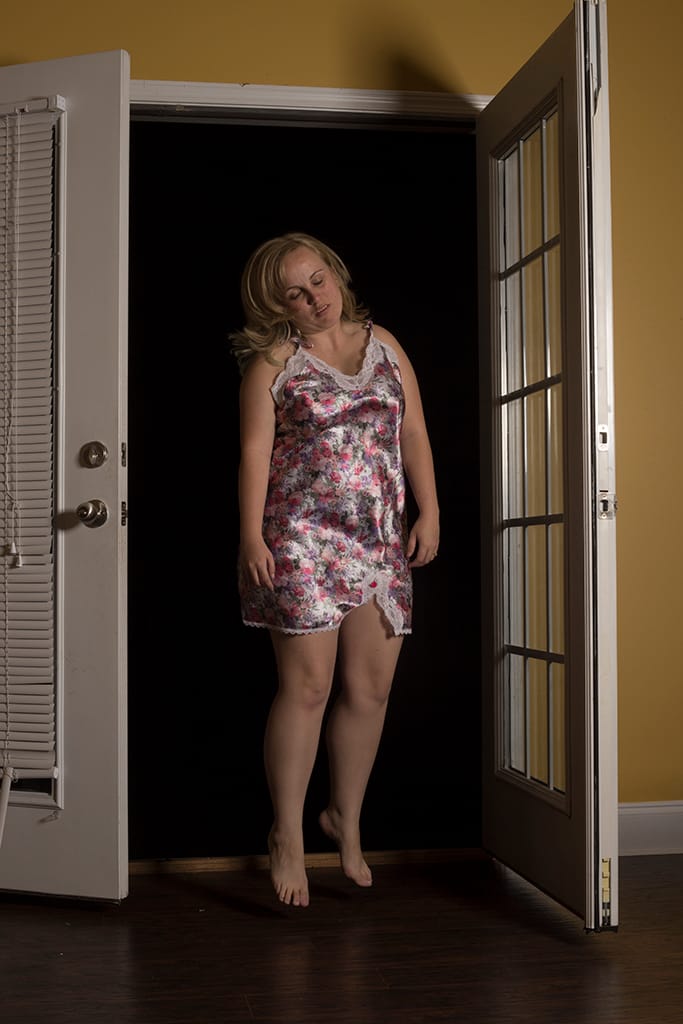
Is there an image in this series that you are most proud of?
I am most proud of the image “Sever” because that particular photograph was the starting point for my series. At the time, I was full of self-doubt and I wasn’t entirely convinced with my abilities. While photographing my daughter, her toes disappeared completely by accident. The image was culmination of the anxiety I felt psychologically. This incident beckoned me to become more susceptible to chance and set the precedent for how future images were produced.
Can you tell me a little bit about your editing process?
My professors say, “Editing is like destroying your babies.” It’s extremely hard. For the series, I wanted to create a loose narrative that was like an autobiographical odyssey. So, I looked at my images, repeated themes, and color to sequence the journey that I wanted the viewer to make. Most of my editing is done by intuition and feeling.
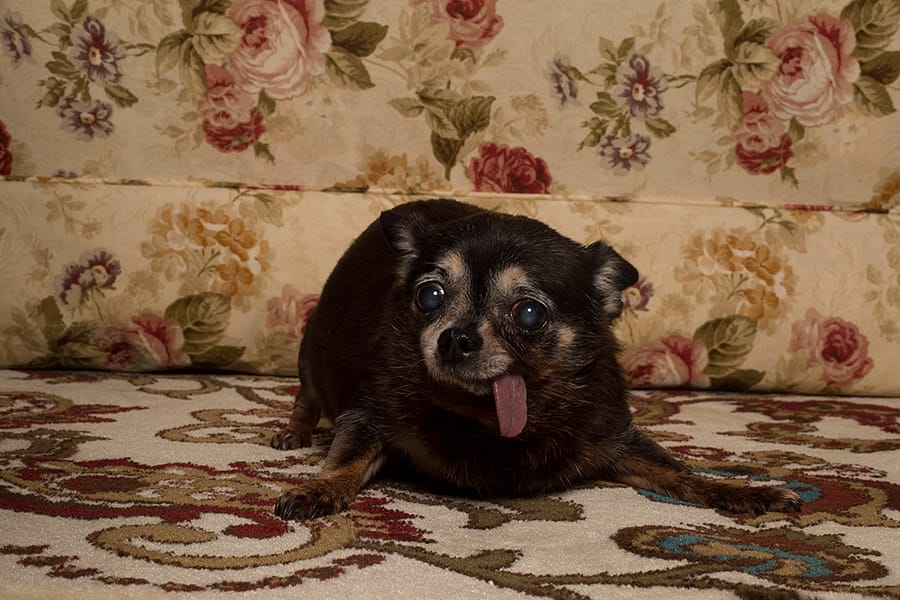
What’s next for you after school?
I enjoy teaching, and I would like to make a career out of learning. This year I have learned so much about myself, and teaching has been a constant source of inspiration. I am open to where life takes me, to chance.
What’s the last great song you listened to?
In This Moment, “Big Bad Wolf”
How can people see more of your work?
I have an Instagram, which features work and personal images, and I am currently working on my website kellisheacouch.com.

